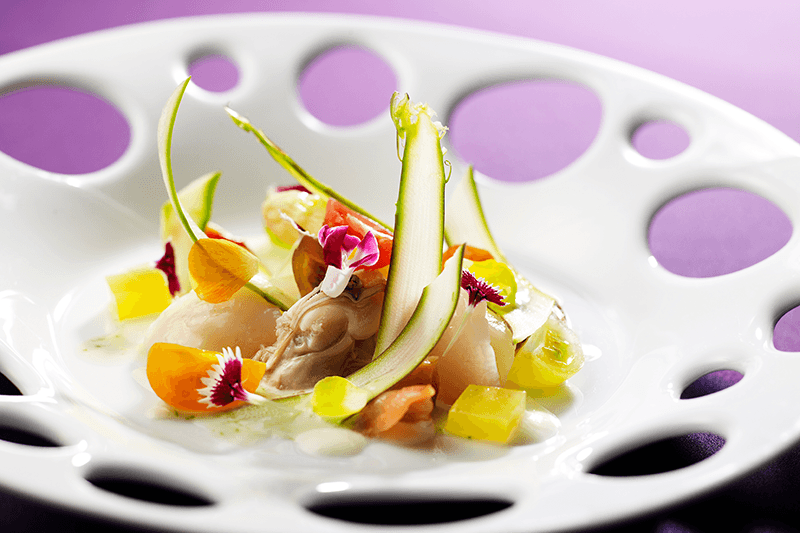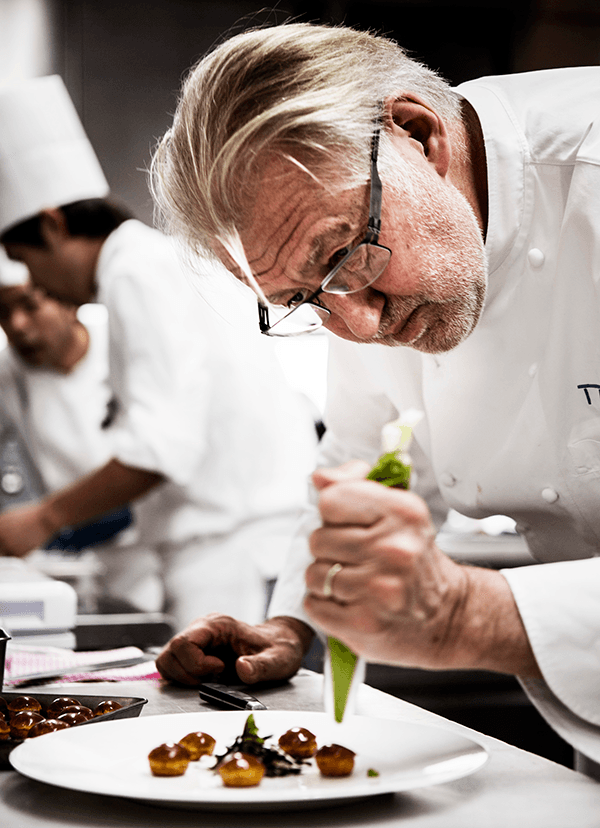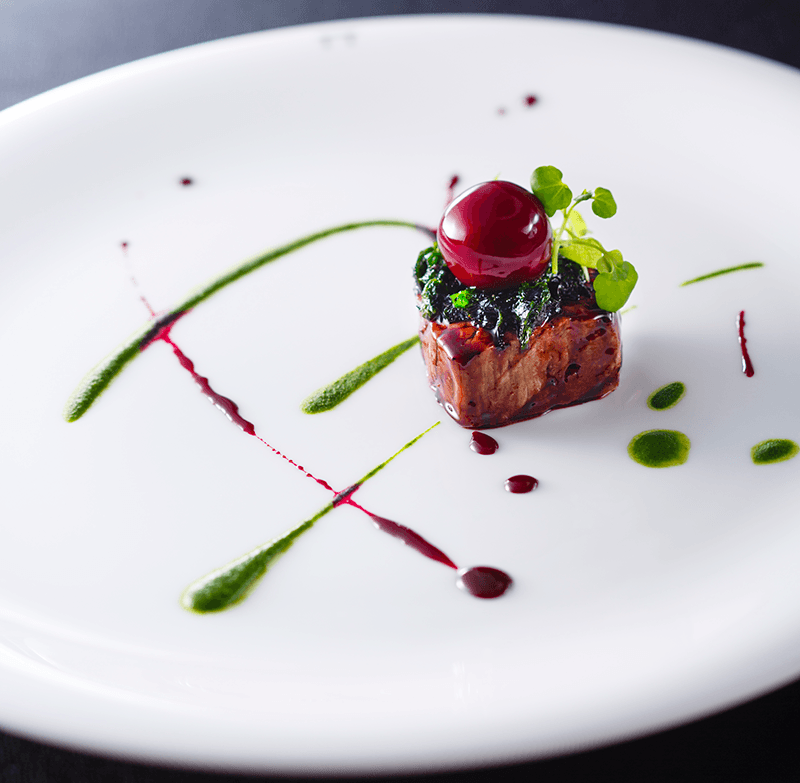Speaking with the culinary master ahead of his return to Tokyo.
By Laurier Tiernan
Pierre Gagnaire was born to restaurateurs in the French village of Apinac, in 1950. Growing up as the eldest son, it was obvious to him that he would spend his life in kitchens, and everyone assumed that he would run the family business. Fate, however, had greater things in store. Forging his own fiercely unique path, he earned three Michelin stars in the nearby city of Saint-Etienne, by “facing tomorrow while respecting yesterday,” and by 2015, five hundred Michelin chefs crowned him the Best Chef in the World. Weekender caught up with the culinary icon as he prepares to perform in person at his restaurant at the ANA InterContinental Tokyo.
Laurier Tiernan: Looking at the beginning of your life, Chef Gagnaire – you were born in Apinac, but your parents’ restaurant was in Saint-Etienne?
Chef Gagnaire: It was in St-Priest-en-Jarez, which is very close to Saint-Etienne. It’s important for me, because the family restaurant was in that area – in the countryside – but when I broke away from my family to make my own way, I opened my own restaurant in Saint-Etienne.
LT: Where did your culinary journey begin?
CG: My first few months were with Chef Paul Bocuse, when I was 15, and then I went back to school in Lyon, where I worked at a two-Michelin star restaurant called “Chez Juliette.”
LT: At which culinary school did you study?
CG: I didn’t learn in a school at all. In my generation we didn’t go to culinary schools. We worked immediately.
LT: Do you feel that working in a two-star Michelin restaurant – instead of going to culinary school – is something that helped you rise to the prominent position where you stand today?
CG: No. You know, there are no guarantees, and no recipes [for success]. Everyone has his own life. It’s destiny. It’s the people you meet, and the places you choose to go. Honestly, the key to my success is my hatred for this profession. It’s my hatred for this profession that created my style!
LT: The journey of your development as a chef took you to places like Lyon, Paris, and the United States. What do you feel that each of those places brought to your skill set or your style?
CG: The travel did not affect my style. It’s my personality (that matters) and my way to analyze my job that matters. I understood that this work could provide the opportunity to create emotions and to give meaning to one’s life.
LT: You don’t think your environment shapes you?
CG: Yes, but your environment … it’s pretty classic when you are an artist, but for me, it’s not a compliment. However, I believe that it’s the constraints in a person’s environment that create the need to approach things differently. And some constraints can kill you. There are some people who have no resilience, and they let themselves be swallowed by their history. Listen to me carefully: it’s the the constraints in your life that give you the energy to say, “No, I will make it! I don’t know how, but I will make it!”
LT: You have only one restaurant in Tokyo. Is that kind of exclusivity important to you?
CG: It’s not an aesthetic choice, but it’s a good idea, because in exclusivity we can offer an excellent team with which to serve people (which takes a long time to build).
LT: Since some people call your cuisine “fusion” – but you do not – what do you call it?
CG: First of all, I have nothing to do with fusion. “Fusion” equals “confusion.” We create emotions, beauty, or tenderness. It’s like making a movie or writing a novel, but it’s pure, because it all comes from me. It’s not a mixture. It’s just me.
LT: Essentially, you are an artist like DaVinci; someone who is unique unto himself?
CG: Yes, I try. One has to be concentrated. and when you are concentrated, you are yourself.
LT: I heard that you are currently in Japan looking for ingredients that you will use to cook for your clients in Tokyo in person at the end of July. Could you please tell us what ingredients you are looking for?
CG: In Japan, it’s fantastic. You have fantastic gardens, and products of the sea. It’s not easy, but you have so many opportunities. In the end the important thing is to decide where to draw your lines. It’s too easy to use typical things like wasabi … I try to observe the local products and use them, but through the products, and through my visions of the towns, I can give my versions of the food. It’s my vision that counts. Japan is a very important country though, so I try to pay tribute to the country itself at the same time.
LT: Could you please give our readers some hints as to the dishes that you will be presenting?
CG: We’ll be using a lot of fruits and vegetables, as well as river fish.
LT: When you choose to come to your restaurants and cook for your customers in person, as opposed to directing your team of chefs, what do you like best about getting back to basics, as it were?
CG: It’s like revising your future and your past. It’s simultaneously very joyous and very tiring.
LT: How do you feel about the relationship between yourself as a kind of a culinary producer, and the chefs and staff who carry out your vision?
CG: It’s not easy. I respect them and I love them. I am happy to share my competence with them. We are so close that we are like a family. It’s like I am the head of a family … but I am the chef [Laughs].
LT: Do you have a parting message for the people of Tokyo?
CG: I love this city. I love this country. [Japan] is very stable, but it changes on a very deep level, despite seeming unchanged on the surface. We thought Japan would die, but it is reborn. That is amazing. That is the resilience that I was speaking about earlier. This is a special place; a truly amazing place.
LT: Thank you very much, Chef Gagnaire.
CG: It was a pleasure. Au Revoir!
Chef Gagnaire will prepare his cuisine in person at his restaurant in the ANA InterContinental Tokyo from July 25 to July 29. For more details, visit www.anaintercontinental-tokyo.jp/pierre_gagnaire/eng/news/rainichi.html.











